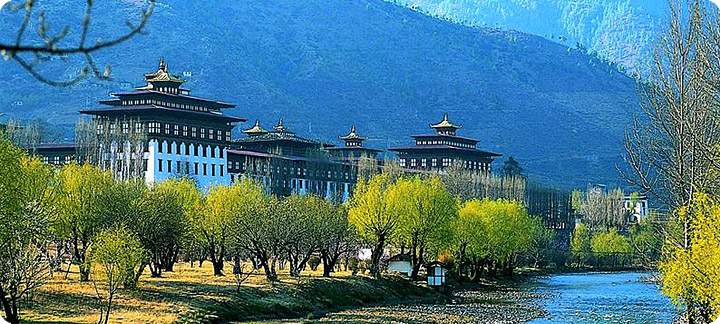
The name Bhutan appears to have been derived from the Sanskrit word 'Bhotant', meaning 'the end of Tibet', or from 'Bhu-uttan', meaning 'high land'. The last of the Mahayana Buddhist Kingdoms it is today the last remaining independent country to support Buddhism as the official state religion. This remote, mystical country is still one of the most un-spoilt places in the world. Wedged between India, China and Bangladesh, it is a jewel, a haven, of Buddhist peace far from the bustle & noise of the great cities to alpine. There are several Buddhism dominated hill states and while the main features of Bhutanese culture recall Tibetan Civilization, it has been adapted here to serve the people’s own inner nature. So over the centuries customs & habits have been blended together to form a typically Bhutanese identity that the people vigorously defend, be it their culture, dressing, sports, way of living …it has a charm all its own. It is also a place where progress is famously measures as ‘Gross National Happiness’.
Opened to tourism in 1974 on the coronation of His Majesty Jigme Singye Wangchuk, Bhutan is one of the world's most exclusive destinations. The grandeur of the mountain peaks, the terraced hills, the lush, green valleys, the dense forests filled with rare flowers and diverse wildlife, the fast flowing crystal clear rivers, the pure, clean air, the unique architecture, art and culture and above all the delightful people who make the soul smile… a trip to Bhutan teaches one of life and real living.
For the traveler with time on hand the west-to–east drive from Paro via Thimphu – the summer capital - and Punakha - the winter capital – and then towards the central region of Bumthang (also the countries cultural & spiritual capital). En route one can take a detour into the pristine and spectacular region of Phobjikha – this ravishingly beautiful region is a winter home to the rare Black Necked Cranes. You finally descend to the lower altitude regions of Mongar, and then Trashigang, before reaching the foothill town of Samdrup Jongkhar that borders with India in the state of Assam. Those with lesser time on hand could consider flying in & out of Paro, and then heading east till Bumthang and then get back to Paro. It is also a fantastic region for walking and in fact this is the best way to see Bhutan.
Visiting the region around the monastic festivals at the gompas is also a fantastic proposal for the traveler interested in Buddhist spirituality & mysticism. The Tse Chu & Dosmoche festivals at Thimphu, Punakha and Jakar are particularly vibrant celebrations.